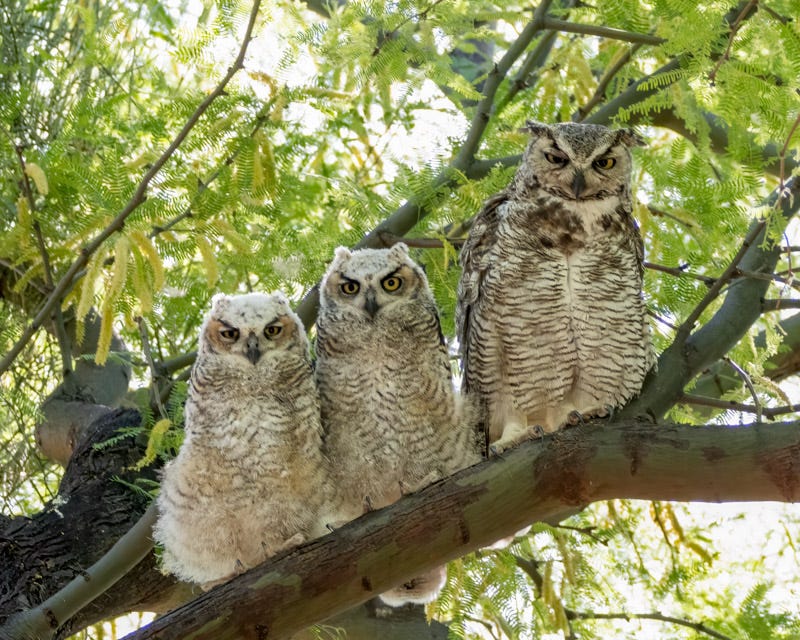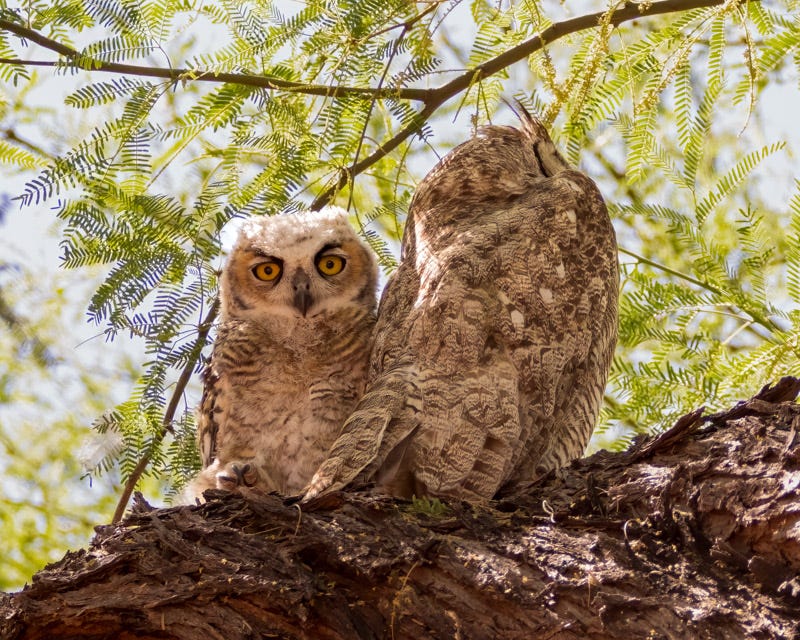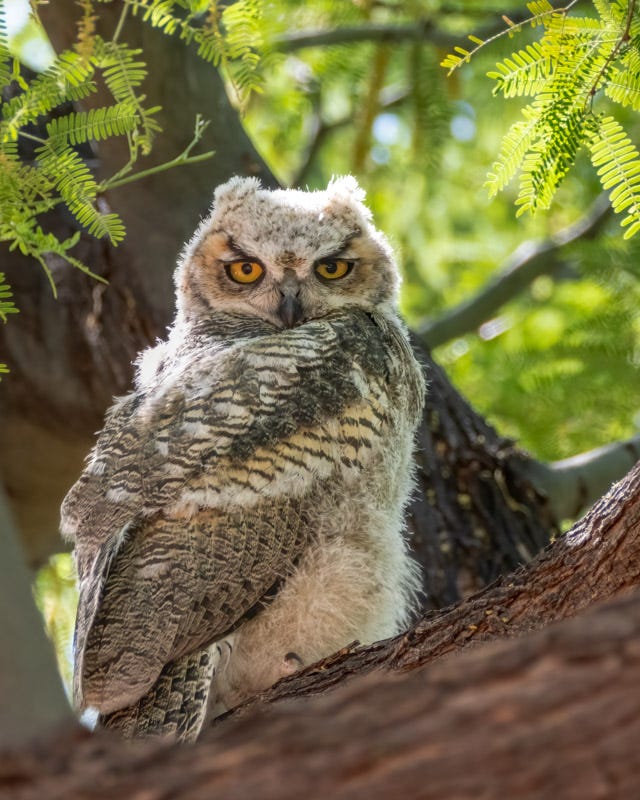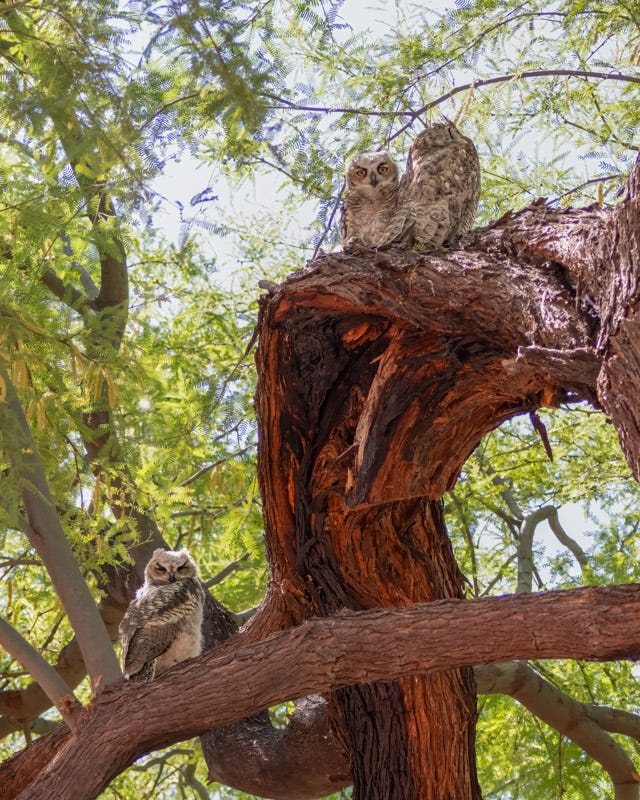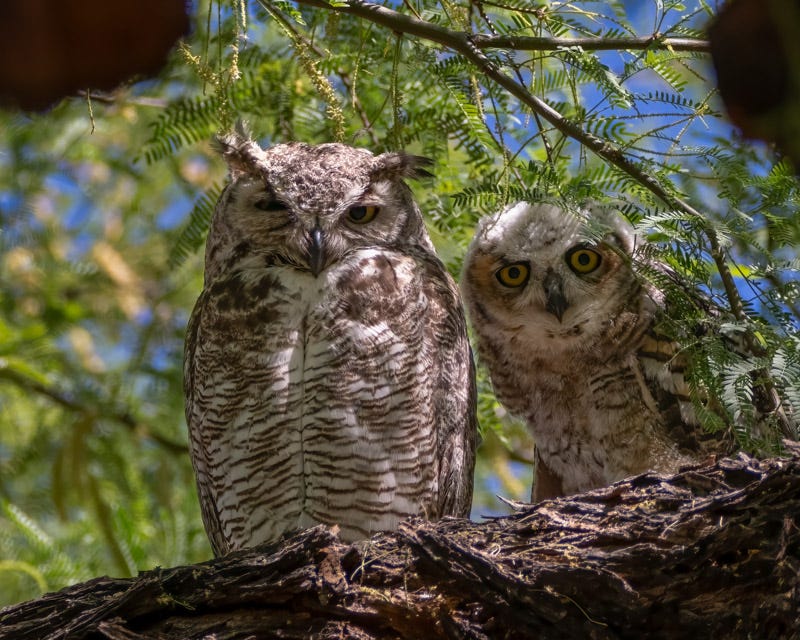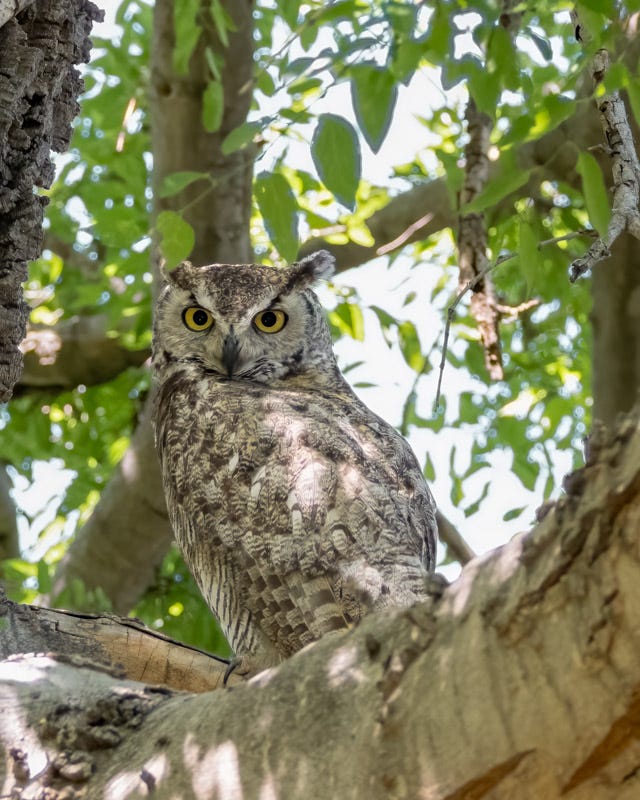Visiting an Owl Family in Mid-town
The fledglings are out of the nest now
Great Horned Owls are generalists with where they live and are the most common owls throughout the United States. In Arizona, they are the biggest owl species we see. In the Tucson urban environment, it seems as if we have a Great Horned Owl (GHO) family present in almost every square mile of the city. A friend let me know about a GHO family in her neighborhood. The nest was hidden deep in foliage near the top of the tree, but once the young owls fledged, leaving the nest, there were opportunities to observe them. Here are some photos I took over a two week period, starting with the mother GHO:
I would always visit in the morning. Two days later I caught both of the owlets perched next to Mom. Mom always can be identified by the brood patch running vertically down her front. The younger of the two owlets has what I call its ‘tutu'. The fuzziest downy feathers are still present lower in its body, giving it a skirted look.
Three days later and the two youngsters were no longer side-by-side. The youngest still prefered to hug Mom. The owl family has remained very close to the nest tree. They will remain near to the nest tree until the young owls become more proficient fliers. This stage takes about two weeks.
The older Great Horned Owlet perched off to the side. From the back, its feathers and wings are looking darker and much more developed than those of the other owlet we saw.
From a different angle, you can get a perspective on how the family was perched.
I walked around to the other side of the tree in an attempt to view the mother GHO and her fledgling face-on. Although deeper in shadows and with the sunlight behind them, this really shows the difference in plumage between the adult and the younger owl.
Over the next week, I visited a few times but the owls were not out where I could see them. They either were hidden in the nest tree, were in a nearby roost spot, or perhaps the youngsters were feathered enough to enable stronger flight and the family had moved to a different roost spot away from the nest tree. Ten days after the last time I saw them I finally found the adult owls.
They were in a tree almost 100 yards away from the nest tree. I didn't see the young owlets and didn't want to pressure the owls so, having seen the parents, I walked off.
At some point in the near future, the owl family will develop a routine and perhaps my friend will let me know if she has found their 'regular' new daytime roost location. Then I'll go back. Great Horned Owls are special birds and nesting season gives us a chance to visit them often.



